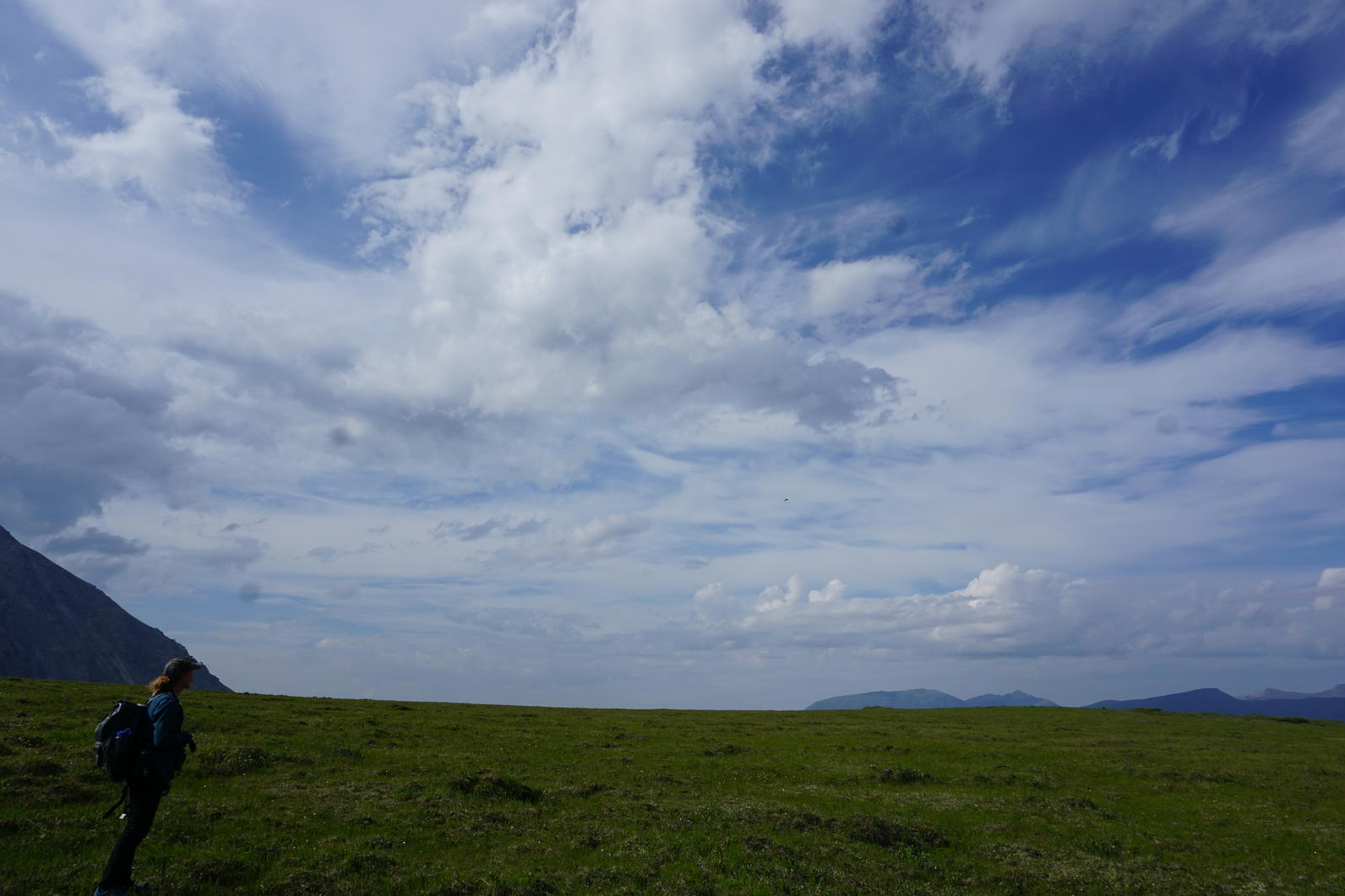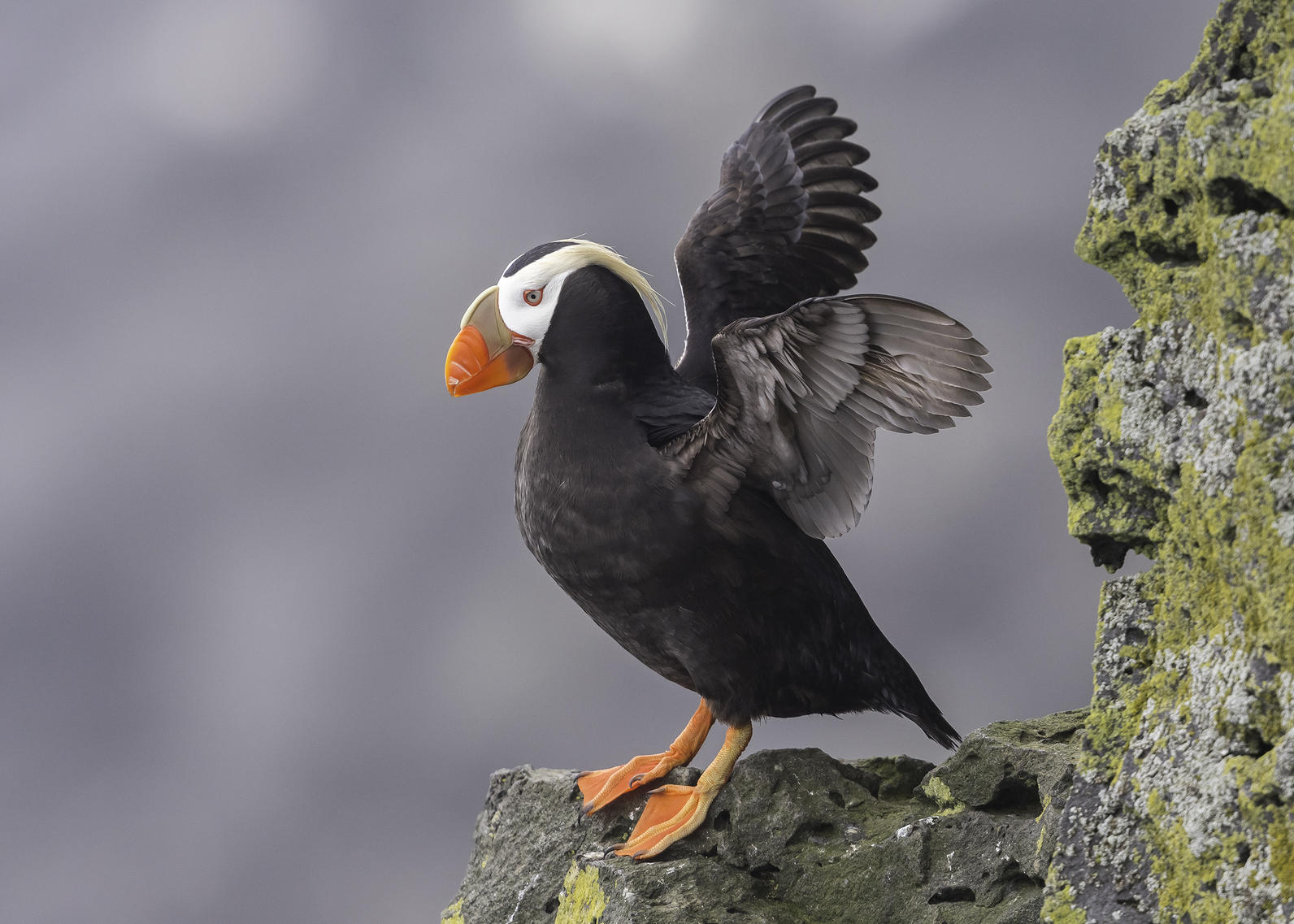The Arctic National Wildlife Refuge and Bristol Bay are extraordinary places in Alaska that provide essential habitat for birds like Snowy Owls and Tufted Puffins. But these birds and the lands they call home are facing serious threats—an oil and gas leasing program in the Refuge, and permitting of the Pebble Mine in the headwaters of Bristol Bay. At Audubon, we are working both at the state and national levels to combat these threats. We work with the administrative branch of government, communicating to federal agencies, as well as at the congressional branch, educating and lobbying members of Congress.
This past spring, Audubon Alaska’s Executive Director Natalie Dawson and Policy Director Susan Culliney traveled to Washington DC to meet with Audubon’s DC team. There, the Alaska staff met with Sarah Greenberger, vice president of conservation policy; Libby Marking, senior manager of government affairs, who also serves as our lobbyist on Alaska topics; and Jaime Sigaran, the national campaigns associate, among several others on the DC team. As a result of our strategizing, our two offices are now working even more closely together toward conservation goals for the Arctic Refuge, Bristol Bay, and other places in Alaska that birds need to thrive.
Our two offices have distinct strengths, and together we can leverage greater conservation power for birds. The Audubon Alaska office meets with Alaska contacts in partner coalitions and federal agencies. We are also in communication with researchers, collecting the very science and data that we need to write informative comments and make recommendations for sound decision-making at the local and national levels. Meanwhile, the Audubon DC office meets with members of Congress and their staff. Our DC team members carry the science in to congressional offices and advocate for legislation that will benefit birds and their habitats in Alaska.

Here is an example. The Audubon Alaska office is closely watching the Arctic Refuge leasing program, with a final Environmental Impact Statement (EIS) expected in late summer. At that point, we will analyze the EIS and identify the deficiencies. At the same time, the DC office is working with Congress to advance legislation that would require any oil company bidding in an Arctic Refuge lease sale to meet a minimum bid threshold. Recall that when Congress passed the Tax Bill allowing Arctic Refuge drilling in 2017, that law assumed that leasing would generate over $1 billion in federal revenue. The minimum bid language that we are helping to advance in Congress simply holds the administration to that amount. Because the $1 billion estimate has always been a wildly optimistic number, this funding limit, if passed, would effectively halt leasing.

On the Bristol Bay issue, the Alaska office submitted technical comments on how the proposed Pebble Mine would present a perpetual risk for birds through its toxic waste materials of selenium and acidic tailings ponds. The DC team is working in Congress to advance legislation that would help protect Bristol Bay from a faulty permitting process.
Now more than ever, our conservation work in Alaska requires this type of collaboration and an approach that is effective across all branches of government. By flocking together within Audubon, connecting with partner groups, and reaching out to supporters like you, we can be more effective advocates for Alaska’s birds and their habitats.



